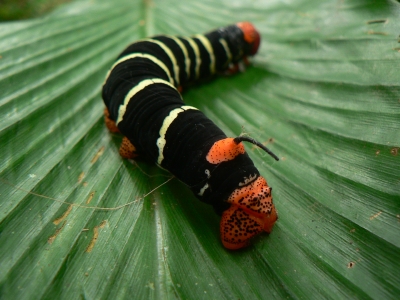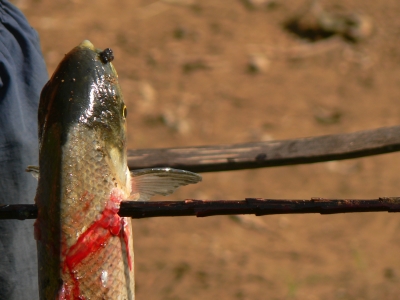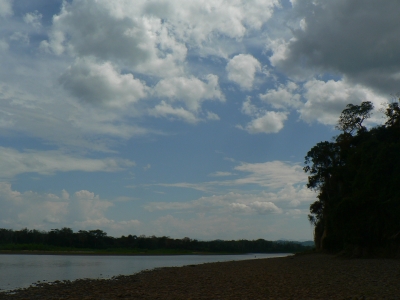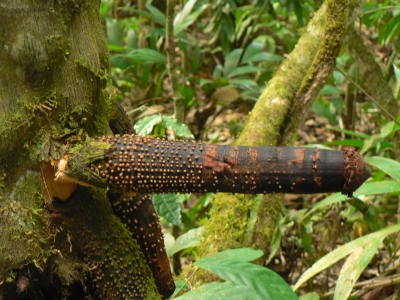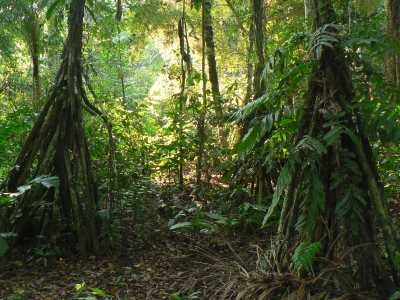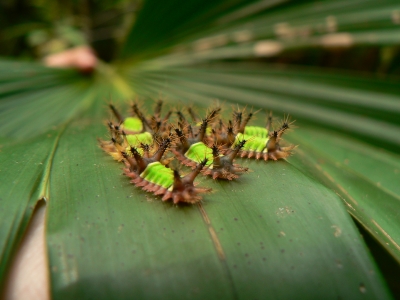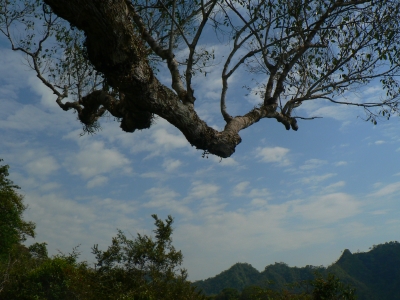|
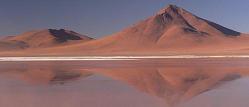 |
|
|
Travelog:
USA Nomads in America
Peru Void Touching
Bolivia
Walk the Rainbow Sweet Sucre Shamanic Verses Ever Upward Gettin' Home Rurrenabaque Chile Wheels of Jesus Valparaiso Argentina Waterfall Wonderland Buenos Aires Magic Boots The Fitz! The Fitz!! Dances w/ Bicycles 1 Dances w/ Bicycles 2 Brazil Inside the Toy Chest Moments from Rio The Island of Honey |
Welcome to the Jungle
Sept 3rd, 2006
The day after I returned from the Bolivian Pampas (wetlands), I read that the Crocodile Hunter was killed by a manta ray's errant tail. After swimming in a muddy river with hundreds of crocodiles and a handful of pink river dolphins, I felt a kinship with our favorite Australian madman, however undeserved. Thankfully, I just impaled my forehead on a giant jungle thorn. (Blood everywhere, but karma somehow smiled on me.) Rurrenabaque deserves note for the sheer diversity within a few hours. The town of 50,000 sits at a turn in the river where wrinkles of the Andes flatten out into the Amazon basin. Rurre is flanked by mountains right out of Jurassic park, rising like teeth and hemming the Beni river like gates. Behind these green blockades, the jungle sat, harboring toucans, anteaters, wild boars, and a few native peoples for centuries, while the rest of Bolivia was pillaged for gold and silver by the Spanish. The area -- now known as Madidi National Park -- was an ecotourism bonanza waiting to happen. For years, land access to the settlement was unheard of.. until yet a crazy explorer with bad teeth (yes, a Brit), forged a path through the jungle, thus paving the way for young, chain-smoking Frenchman to wear bad hats and learn about jungle wildlife and indigenous culture. But, with dusty roads also stretching into the wetlands that begin the basin, Rurrenabaque is a two-for-one deal -- with tours along the narrow river Yacuma as well as the big bad jungle. The irony of the pairing is that while the jungle harbors more animals, they're almost impossible to see behind all the foliage. The Pampas on the other hand, are like National Geographic window-shopping. Birds, from egrets to eagles flap around you, with alligators, crocs and caimans lazing on the banks. All the weirder are families of capybaras (oversized rodent throwbacks to the Jurassic) twitching their noses as you pass. We spent most of our tour time puttering up and down the 5th Avenue of thirsty wildlife in a canoe with an outboard motor. Among other things, we also went hunting through nearby ponds for an anaconda (which we found, and the guide subsequently handled until it curled up into a knot. Ugh.) Added to the photo bonanza one surreal circumstance -- half the Pampas were on fire. Unfortunately, every winter (Jun-Aug), the large ranching estates start burning pesky trees to make way for cattle and grassland. This year, thanks to an unusually dry winter, these smoldering fires spread past the private estates. Whipping through the national park, windborne sparks managed to char nearly half of some areas of the riverbank. Bolivia organizing forest-saving paratroopers ... well, it's just not going to happen. Walking through surrounding fields to/from the river, we crossed what could only be described as a blackened wasteland. Though much will regrow when the pampas flood in January, trees (and more than a few animals) arenīt so perennial. The jungle, on the other hand, lies behind the protective ridge mountains. Although several times before I've wondered "is this *the jungle*?" the answer was obvious here. The Madidi area is lush, green and beautiful, with flowering trees, butterflies and cawing parrots and macaws flying overhead. Perhaps more interesting: the plants. (Jaguars, wild boars, anteeaters, monkeys etc are so good at hiding.) My tour, run by families of the indigenous Tacana culture, conducted various day and night hikes around the jungle. Nicolas, our guide, grew up in the jungle with a Shaman father. We met trees that could be used for soaps, dyes, garlic (for cooking), vines that spewed clean drinkable water when cut, and even the hallucinogenic Huayahuasca vine. My personal favorite was "la planta que camina", or "the plant that walks." This palm lacks a single straight trunk, instead expending a tent of spiny poles into the ground, reminiscent of a stiff, green jellyfish. Over the course of its life, the plant may migrate up to 15 feet to catch better light. (see bottom right photo) In the midst of walking among these curious residents and the array of tree giants (with some like the Bibosi over 15 feet wide), often 300-400 years old. Vines hang down from 100 feet above, including parasitic varieties like the strangler fig, that surrounds and can actually replace its tree "host." These areas of the jungle have not flooded nor burned, and to accompany the sheer force of the greenery, all around us were the sounds of the hidden monkeys and birds. The system is so complete and undisturbed that it has a resonance -- like a well-aged violin. There isn't a story to tell from the jungle. No broken motors, or camp invasions by boars. I was nursing a sprained ankle from the La Paz airport, but that's not adventure travel.. The tour was well organized and ran smoothly. The French smoked constantly, I snapped photos of trees bearing thorns, dozens of weird insects. We walked in the dark and discovered marsupials who didn't want to meet us. Ate fried yucca and grapefruit that we harvested from the family home of a guide. Floated down the river on a log of balsa wood Sometimes it's like that.. so just enjoy the photos =) |
Snaps:
(All Bolivia)
|
.gif)
